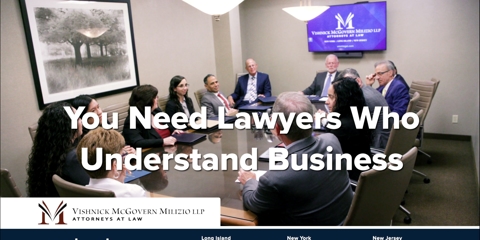November is National Adoption Month, an initiative of the U.S. Department of Health & Human Services Children's Bureau. Dating back to 1976, its goal is to increase national awareness of the need for permanent families for children and youth in the U.S. foster care system.
VMM's new Surrogacy, Adoption, and Assisted Reproduction Practice, established last July, was created to help prospective parents navigate the complex process from start to finish. If you or someone you know need help starting or expanding a family, contact us.
The different types of adoption
There are several different kinds of adoptions, some done even when there’s a biological connection between the child and one of the adoptive parents.
Traditional adoption involves the biological parents of a child relinquishing their parental rights, which are then assumed by the adoptive parent(s).
While the birth parents must execute a written consent, they retain the right to change their minds and keep the child at any stage of the pregnancy, and in the State of New York generally up to 30–45 days from birth. Birth parents’ rights may also be terminated by the court.
Stepparent adoption (also called second-parent adoption or co-parent adoption) involves a child being adopted by the spouse or partner of their biological parent, creating a legal relationship with the child. The other biological parent’s rights are either voluntarily surrendered or terminated by the court.
In the case of traditional surrogacy the surrogate’s own egg is used, making her the biological mother. Adoption is necessary in the State of New York for the nonbiological parent to be considered the child’s legal parent and included on the child’s birth certificate. The surrogate mother must relinquish her parental rights, which she can only legally do after the child is born.
In the case of gestational surrogacy, the surrogate carries an embryo not her own. If either the sperm or egg came from an unknown donor, in New York State both the biological parent and their spouse or partner may be considered the child’s legal parents through a pre-birth order and included on the birth certificate.
There is even adult adoption, which involves the adoption of a person over the age of 18 for the purpose of legally establishing a parent-child relationship. This bestows legal rights, including those of inheritance, on the parties. Adult adoption is common in cases of a longstanding stepparent relationship.
Given the wide range of circumstances and complex laws governing adoption procedures, proper planning, drafting of agreements, and representation in court is essential.
Meredith Chesler is an associate in the firm's Trust and Estate Administration and Surrogacy, Adoption, and Assisted Reproduction Practices. She can be reached at mchesler@vmmlegal.com and 516.437.4385 x116.



